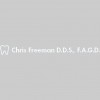Welcome to the web site of orthodontist J. Mike Rowan Jr. Here, you will learn more about Dr. J. Mike Rowan Jr., our staff, and orthodontics in general. Located in Tyler, Texas, our practice provides quality orthodontic care to children, adolescents, and adults in a friendly, comfortable environment. We utilize the latest technological advances in the industry, along with the latest in computer technology to ensure that you receive the most effective care possible.
Services
Dr. J. Mike Rowan Jr. is an accredited orthodontist.
This means that Dr. J. Mike Rowan Jr. is a dental specialist who has completed an advanced post-doctoral course, accredited by the American Dental Association, of at least two academic years in the specialty of orthodontics.
Dr. J. Mike Rowan Jr. is dedicated to creating outstanding smiles for his patients, using the latest technology available.
Our staff is glad to serve you and is committed to providing the best possible care for your family.
This means that Dr. J. Mike Rowan Jr. is a dental specialist who has completed an advanced post-doctoral course, accredited by the American Dental Association, of at least two academic years in the specialty of orthodontics.
Dr. J. Mike Rowan Jr. is dedicated to creating outstanding smiles for his patients, using the latest technology available.
Our staff is glad to serve you and is committed to providing the best possible care for your family.
At the first visit to the orthodontist, diagnostic records are made to determine the best course of treatment.
Complete diagnostic records typically include a medical/dental history, clinical examination; plaster study models of the teeth, photos of the patient's face and teeth, and X-rays.
This information is used to develop a custom treatment plan for each patient.
These records are also helpful in tracking the progress of treatment as the teeth move under orthodontic care.
After the doctor has evaluated your records, we discuss your treatment with you in detail, including the cost for your particular case.
Complete diagnostic records typically include a medical/dental history, clinical examination; plaster study models of the teeth, photos of the patient's face and teeth, and X-rays.
This information is used to develop a custom treatment plan for each patient.
These records are also helpful in tracking the progress of treatment as the teeth move under orthodontic care.
After the doctor has evaluated your records, we discuss your treatment with you in detail, including the cost for your particular case.
Your dentist may have discussed with you the benefits of having healthy teeth and proper jaw alignment.
Crooked and crowded teeth are hard to clean and maintain.
This can result in tooth decay, worsen gum disease and lead to tooth loss.
Other orthodontic problems can contribute to abnormal wear of tooth surfaces, inefficient chewing function, excessive stress on gum tissue and the bone that supports the teeth, or misalignment of the jaw joints.
These can lead to chronic headaches and face or neck pain.
Crooked and crowded teeth are hard to clean and maintain.
This can result in tooth decay, worsen gum disease and lead to tooth loss.
Other orthodontic problems can contribute to abnormal wear of tooth surfaces, inefficient chewing function, excessive stress on gum tissue and the bone that supports the teeth, or misalignment of the jaw joints.
These can lead to chronic headaches and face or neck pain.
What can you eat? Let's talk about what you shouldn't eat!
If you've been wanting to drop a few pounds, the first week wearing braces is just your chance!
For the first day or so, stick to soft foods.
Avoid tough meats, hard breads, and raw vegetables.
Before long, you'll be able to bite a cucumber again, but you'll need to protect your orthodontic appliances when you eat for as long as you're wearing braces.
When you get your braces on, you may feel general soreness in your mouth and teeth may be tender to biting pressures for three to five days.
If you've been wanting to drop a few pounds, the first week wearing braces is just your chance!
For the first day or so, stick to soft foods.
Avoid tough meats, hard breads, and raw vegetables.
Before long, you'll be able to bite a cucumber again, but you'll need to protect your orthodontic appliances when you eat for as long as you're wearing braces.
When you get your braces on, you may feel general soreness in your mouth and teeth may be tender to biting pressures for three to five days.
Reviews

Be the first to review Mike Rowan Jr, DDS.
Write a Review



